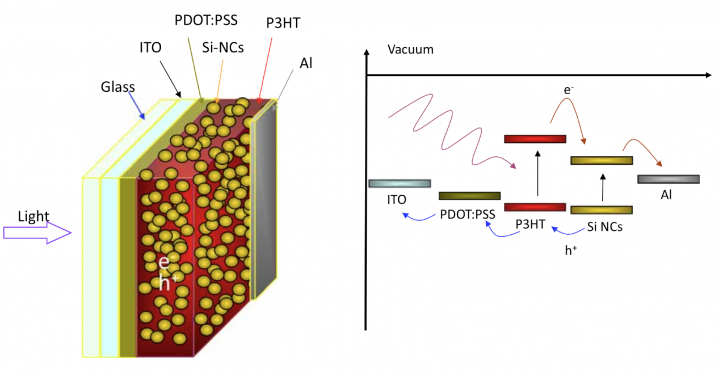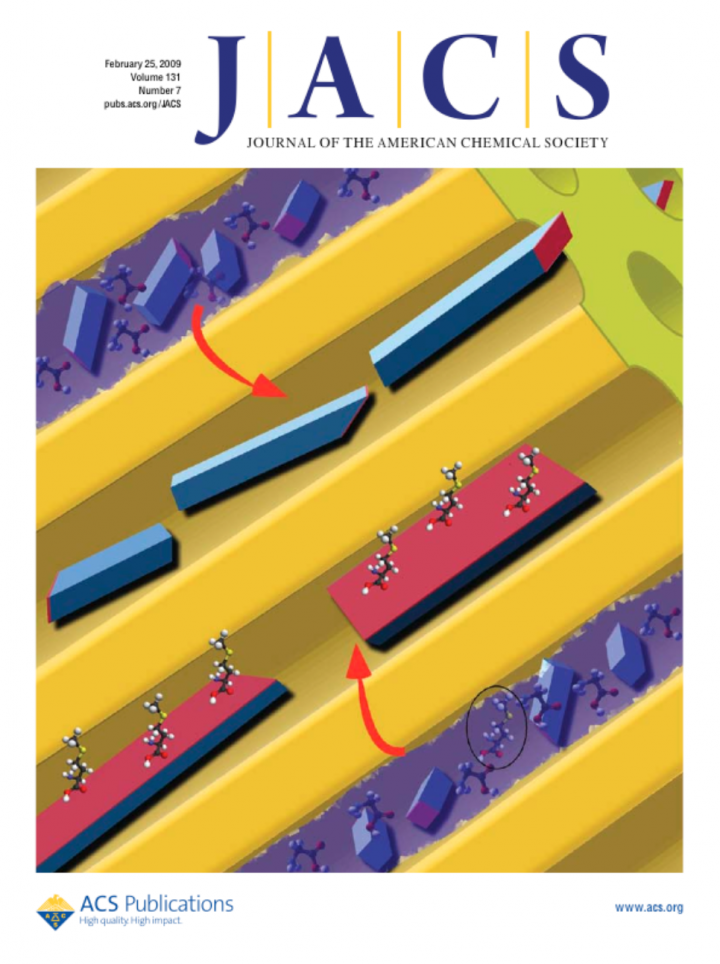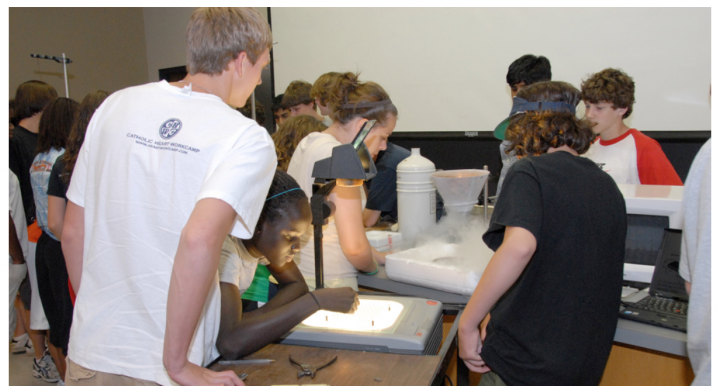Mr. Chin-Yi Liu, a graduate student working in Professor Kortshagen’s group, demonstrated the first hybrid solar cell based on silicon nanocrystals and a conductive polymer, poly-3(hexylthiophene) (P3HT).

Mr. Chin-Yi Liu, a graduate student working in Professor Kortshagen’s group, demonstrated the first hybrid solar cell based on silicon nanocrystals and a conductive polymer, poly-3(hexylthiophene) (P3HT).

The UMN MRSEC has demonstrated the control of nanocrystal orientation within nanoporous polymer monoliths prepared from ABC triblock terpolymers containing a robust A block (polystyrene), a hydrophilic B block [poly(dimethylacrylamide)]

MRSEC faculty members Paul Crowell, Chris Leighton, and Dan Dahlberg and their students guided 25 high school students through an exploration of magnetism and its applications to technology as part of the Institute of Technology Center for Education Programs (ITCEP) Exploring Careers in Science & Engineering summer camp. The day of activities included hands-on demos, a lunch with recent graduates working in industry, and an afternoon spent building motors, magnetic levitators, generators, and radios.
Self-assembling block copolymers provide a simple, efficient, and rapid way to generate nanoscale patterns over macroscopic areas:Â’ for example, an array of 20 nm dots covering a 100 mm silicon wafer.Â’ These dots can be "lined up" by applying shear to the block copolymer film [1], but the order is not perfect:Â’ dislocations (lines of dots that abruptly start or end) remain in the film.Â’
Surface plasmons - collective oscillations of free charges - on metal surfaces have resulted in demonstrations of enhanced optical transmission, collimation of light through a subwavelength aperture, negative permeability and refraction at visible wavelengths, and second-harmonic generation.
Organic photovoltaic devices (OPVs) hold promise for a variety of applications requiring alternative energy generation. Through a collaboration betweenÂ’ Northwestern University MRSEC IRG 4 and Wright Patterson Air Force Base, a new strategy for characterizing the electrical and optical performance of operating OPVs has recently been developed.
A partnership between the NU-MRSEC and the Art Institute of Chicago provides fertile ground for curriculum development. Lisa Backus, a high school chemistry teacher and participant in the Center's 2006Â’ Research Experience for Teachers (RET) program was inspired by her summer research project working on conservation science problems of Ancient Chinese jades and Winslow Homer watercolors.
One of the key hurdles to building a large quantum computer is maintaining the coherence of the many individual two-level quantum mechanical systems, or qubits. Atoms and ions in a vacuum or nuclear spins in solids and liquids can have long coherence, but it is not yet known how well those systems can be scaled to make a large computer.